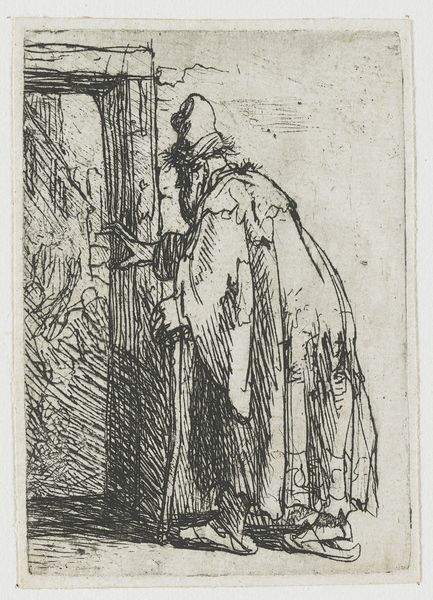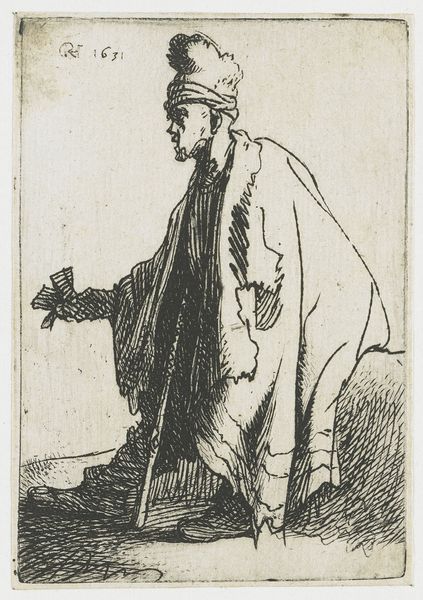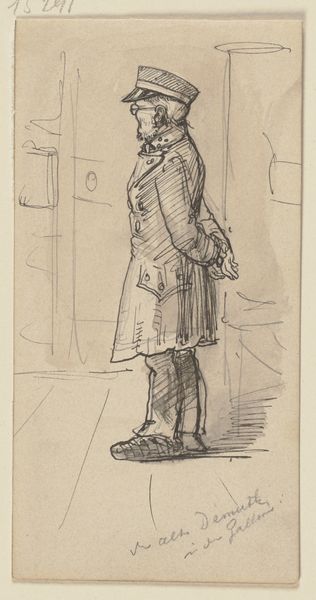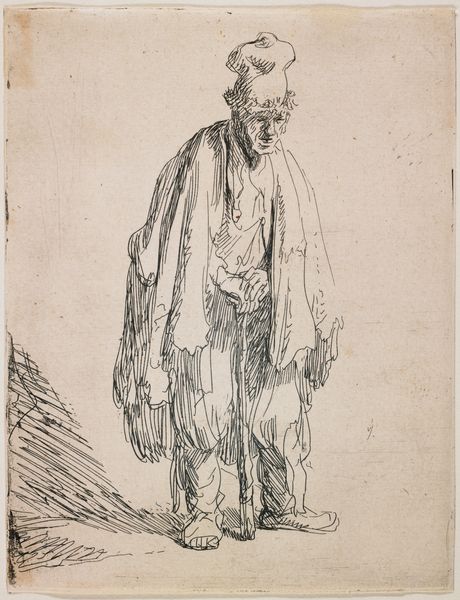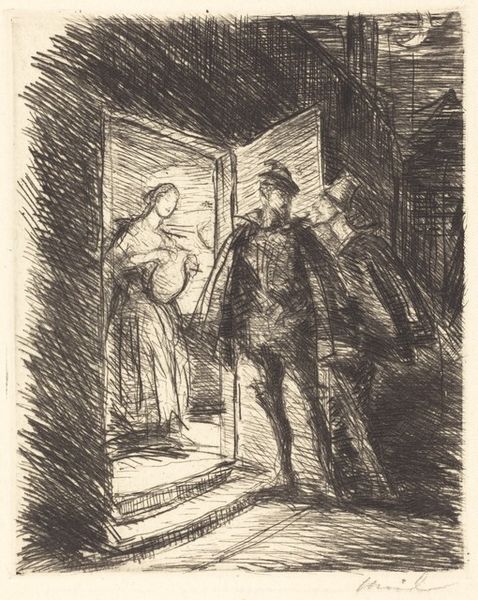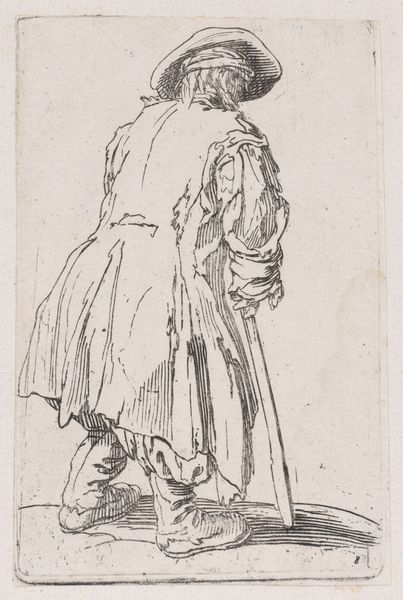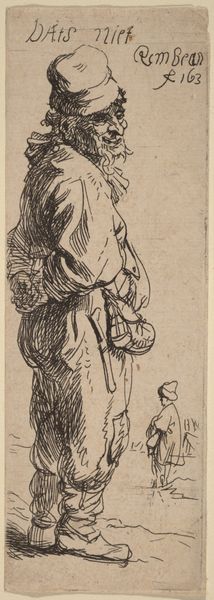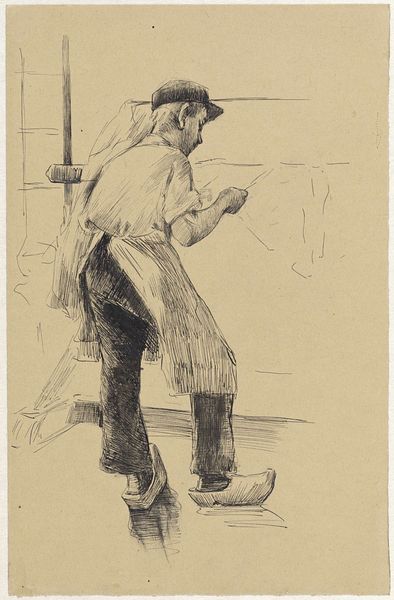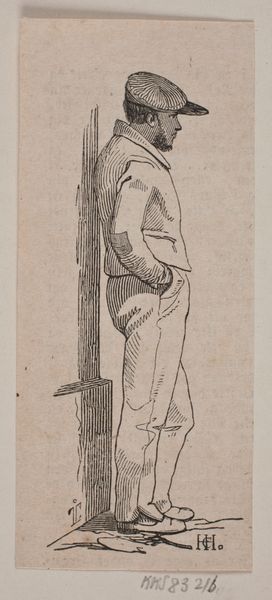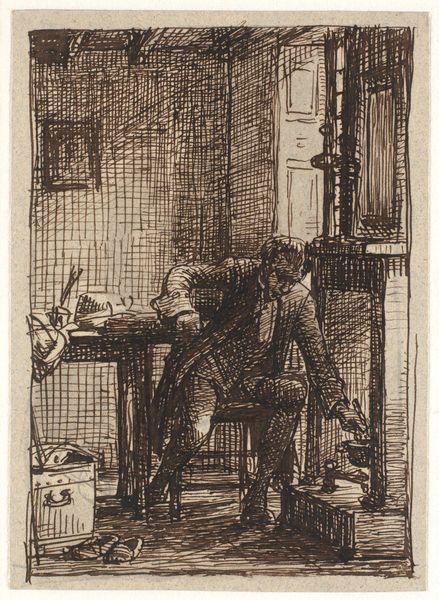
drawing, print
#
drawing
#
light pencil work
# print
#
pen sketch
#
pencil sketch
#
sketch book
#
personal sketchbook
#
sketchwork
#
pen-ink sketch
#
men
#
sketchbook drawing
#
storyboard and sketchbook work
#
sketchbook art
Dimensions: Sheet: 3 in. × 2 1/8 in. (7.6 × 5.4 cm)
Copyright: Public Domain
This print, *The Blindness of Tobit: A Sketch,* was made in the early to mid-1800s by William James Smith, using etching on paper. The artist would have covered a metal plate with a waxy, acid-resistant ground, then scratched away lines to expose the metal. Immersing the plate in acid would bite into the metal, creating recessed lines. The more time in the acid, the darker the lines appear in the print. Then, the plate is inked, the surface wiped clean, and the ink remaining in the etched lines is transferred to paper through a press. Here, the material qualities of the metal plate and the artist’s skilled manipulations in etching have given the image a specific visual language. Notice the cross-hatching and varied line weights used to create tone, shadow, and texture, as well as the density of labor involved in creating the matrix, which is so at odds with the diminutive scale. Thinking about the making of this print reminds us that art is not just about the image, but also about the processes and techniques that bring it into being. This challenges traditional hierarchies between fine art and craft.
Comments
No comments
Be the first to comment and join the conversation on the ultimate creative platform.
